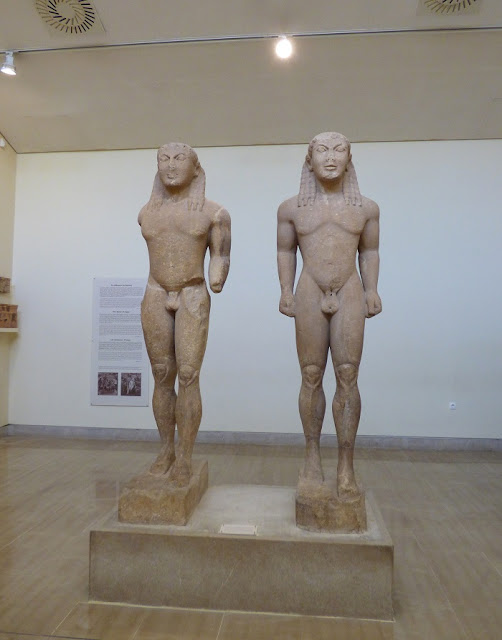THE TRUE MEANING OF HAPINESS
15:59:00
According to
Herodotus, Solon the Athenian, who was renowned for his wisdom, came to the court of
the king of ancient Lydia, Croesus. Solon stayed
at the palace as a guest and the king showed him his enormous wealth. As he was
pretty secure in his own wealth and happiness, he asked Solon the following
question: “Stranger of Athens, we have
heard much of your wisdom and travels. I am very curious and I want to ask you
- Who, of all the people you have encountered, do you consider the happiest?”
Of course Croesus thought Solon would answer that he, Croesus, was the
happiest man he had ever met, because of his wealth. Instead, Solon gave
Croesus three names. The first was Tellus, the second and third the brothers Cleobis
and Biton. The king was confused as to why he was not considered to be one of
the happiest of men. In response, Solon shared first the tale of Tellus and
then the tale of Cleobis and Biton.
Cleobis and Biton, as recounted by Herodotus, were the sons of Cydippe
(the priestess of Hera). During an Argive festival
honouring Hera, Cydippe absolutely had to be conveyed to the temple by a team
of oxen.[..] But their oxen had not come
back from the fields in time, so the youths took the yoke upon their own
shoulders under constraint of time. They drew the wagon, with their mother
riding atop it, traveling five miles until they arrived at the temple [..].
Everybody congratulated them on their strength. Furthermore, they congratulated
their mother for having borne such children. Cydippe begged the goddess to grant them, as a
reward for their piety, whatever was best for mortal men. After the feast, the
brothers went to sleep and never rose again. The goddess granted them a
peaceful death in their sleep.
When
you visit the archaeological museum of Delphi, you may admire the statues of
Cleobis and Biton that the Argives made to honour the ‘’best of men’’. In the middle of the room 3, two identical,
life-size statues (height: 1,97m) catch immediately the eye of the visitor.
They are among the best known examples of the Greek kouros and one of the
earliest examples of large scale archaic sculpture. They stand side-by-side
both naked with one leg forward, their arms are slightly bent and their fists
tightly closed. Their faces bear the typical Archaic smile. From the time of their discovery, they have been identified as Cleobis and Biton of
Argos, although other
archaeologists who have studied the statues, see in them the twin sons of Zeus, the Dioscouri. According
to the inscription, these kouroi were made by the sculptor (Poly)medes of Argos
and were dedicated to Apollo by the people of Argos.













0 σχόλια